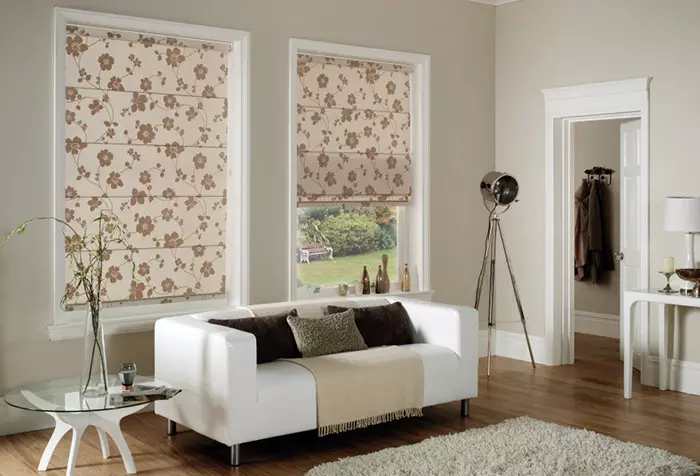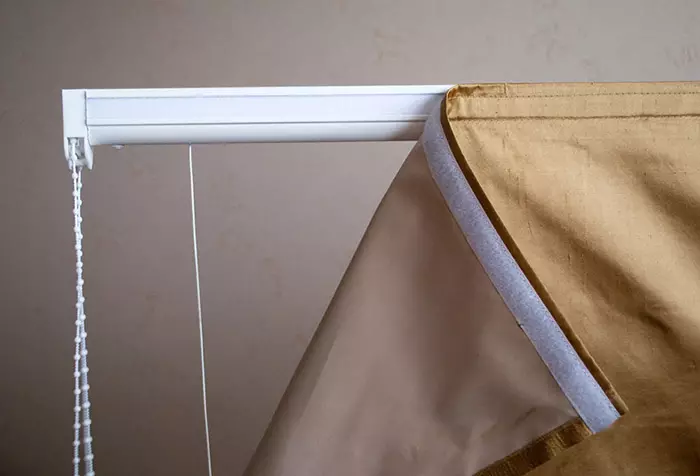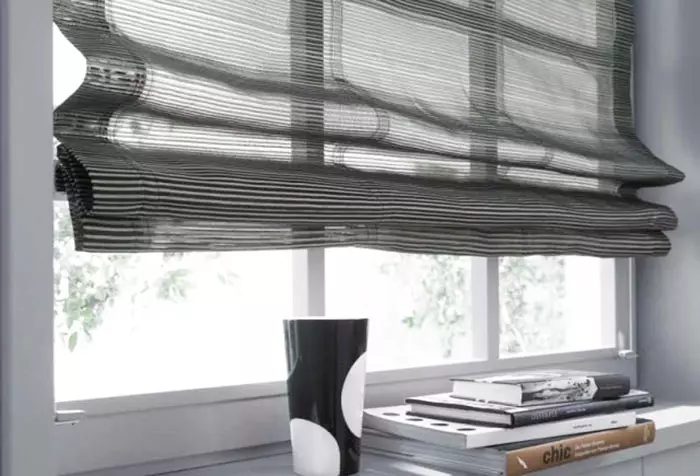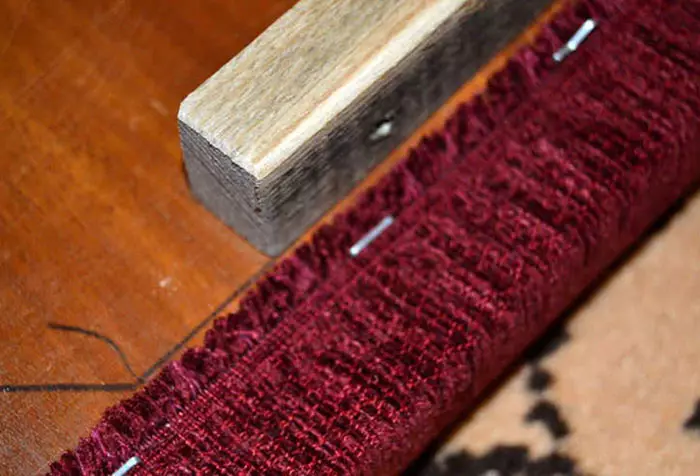How are Roman curtains and hard to install them independently? Answers to these questions often worry those who decided to decorate their windows with this type of lifting curtains. From the whole manifold, these models are highlighted by special aesthetic and ease. Pretty simple, uncomplicated curtain design capable of forming beautiful folds, allows you to use them almost everywhere: houses, in offices, cabinets, cafes and other places.
A few thousand years have passed since the fall of ancient Rome, and the curtains of that epoch are still in demand. What is the secret of such success? In those distant times with the help of the curtains were protected from the Sun and dust. In the modern world, they also perform their functions well and are elegant element when interior design.
Roman curtains can be characterized by the following qualities:
- Simple and very comfortable design;
- concise appearance;
- Easy care;
- Small fabric consumption for their manufacture.
In the closed form, the curtain looks like a smooth fabric canvas, divided into several sections. Its dimensions can be different. There are samples comparable to window sash dimensions corresponding to the window to the window or exceeding it in size. The curtain opens from the bottom up, while the fabric is going to large horizontal folds. In order for the bends to be neat and smooth, special racks from plastic are inserted into the cloth.

Methods of fastening curtains
Fix the Roman curtains in several ways:
- on the wall;
- on the ceiling;
- in the window opening;
- On the window.
Place for mounting is chosen depending on what result must be achieved. If the windowsill is planned to be used for various needs, it is better to fix the design on the surface of the window. Then she will not overlap access to the windowsill, it can be used when curtained curtains.
Article on the topic: Marble tile for the bathroom - Tips for choosing
In some cases, it is better to hang a model that will close the entire window opening. Especially when you need to hide visible defects, such as uneven slopes. The choice of place for fastening also depends on the designer approach to the window design. Sometimes one-piece canvas is preferable, as it looks better than a whole group of curtains intended for each sash separately.
Large sample samples are attached to the wall or ceiling. You can fix the cloth in the window opening. This is especially good for compositions when the Roman curtains and classic curtains combine. It looks like design interesting and stylish.

Confirm curtains with cornice
Fastening of Roman curtains are carried out on a special cornice. The material for its manufacture serve aluminum, plastic, steel. The cornice is a profile equipped with a lifting mechanism and control unit. The curtain rise is carried out using a special cord.
There are various types of such fixtures. A mini-design designed for small curtains is attached to plastic windows. On each sash placed a separate cornice. Such placement of the curtain allows you to have free access to the windowsill.
Correspondures of standard type have dimensions from 1.1 m to 2.5 m. They are fixed on the wall over the window opening. The curtain cloth closes the entire window. This method of attachment of the Roman curtain helps to create a single harmonious composition. In stores you can buy ready-made Roman curtains with a size of 1500 × 1800 mm with a cornice.
For mansard beveled windows, there is a special option for fixing the Roman curtains. Eaves in this case not only serve as an attachment for the curtains, but also allow them not to be saved. The fabric is located parallel to the surface of the window. With this method of fastening the curtains look very neatly.
Eaves for Roman curtains are usually ordered in the same place where the canvas itself is made. Standard models are supplied complete with curtains. They are sold in construction stores. In the studio specializing in fasteners for various kinds of curtains, you can purchase cornice separately.
Article on the topic: Features of use and specifications of organity

FEATURES OF ROMAN CORTER INSTALLATION
Despite the design features of this type of curtain, their installation is easy. When choosing a place to accommodate the curtains, some features of these curtains should be taken into account. This will help avoid mistakes and high-quality curtain installation.
If you plan to fix the cloth in the window opening to the upper wall, then you need to take into account the distance from the curtains to the window. The fact is that the Roman curtains in the upper part does not form a fold. They can interfere with opening window sash for natural ventilation. In this case, attach the canvas better on top of the window opening or to the frame.
Special cornice for the Roman curtains is a great option for fastening. But if the design of the windows does not allow it to be used, then it is without that. Curtains with a lifting mechanism can be mounted in other ways. Although they look better with the cornice and are easier exploited.
When mounting the canvas on the plastic window, the baptine eaves will be used using self-samples, violating the integrity of the frame. Other ways are possible, but they are not effective enough. Installation of the curtain will require some skills. You can use the services of the Master, especially if there are no skills of such work.
Before fixing the cornice, make markup. Usually there is enough two points for fixing. They are closer to the edges of the structure. For longer cornices, it is better to add another fastener in the middle of the profile. Fixation is carried out on plastic windows using self-samples. When mounting to the wall or ceiling, dowels are used.

Fix the curtains without a special cornice for Roman curtains
Attach the curtains and without the cornice of a special design. For these purposes, you can use the usual direct cornice and velcro. With this embodiment, the fabric is conveniently removed for washing. And after cleaning the canvas without much difficulty is placed in place. With the help of velcro, you can attach mini-curtains directly on the window frame. This method is not the most efficient, but often used in practice.
Article on the topic: Balcony Ceiling Waterproofing: Materials and Process
You can make eaves independently from the girlfriend, such as a tree. The Roman cloth in this case is attached using a furniture stapler. Such a fastening process will not take much time and does not require large material costs. True, it looks not always flawless. Yes, and the curtain for washing will need to be removed very carefully, so as not to damage the fabric.
Attach the Roman scope in other ways. The top edge of the canvas is sweeping and stitched. Through the resulting clearance, the cornice felt, fixing the curtain in this way. It will be possible to remove the fixed cloth only with the cornice. Alternatively, you can make a loop curtain on top. In this case, the fabric is attached to the cornice-bar.
Roman models will become excellent design for windows. Attach such curtains is not so difficult. To date, manufacturers offer various samples of eaves intended for the curtains of this species. But if you purchase such a design is not included in your plans, you can do with undergraduate means.
About where to attach the Roman cloth should think in advance. Usually they are fixed where they will be most conveniently located. There are no special restrictions on the choice of place for attachment. The curtain can be attached to the wall, ceiling, in the light of the opening, on the plastic window. The Roman Curtains should be harmonized with a common room interior and be comfortable, not to create interference during operation.
